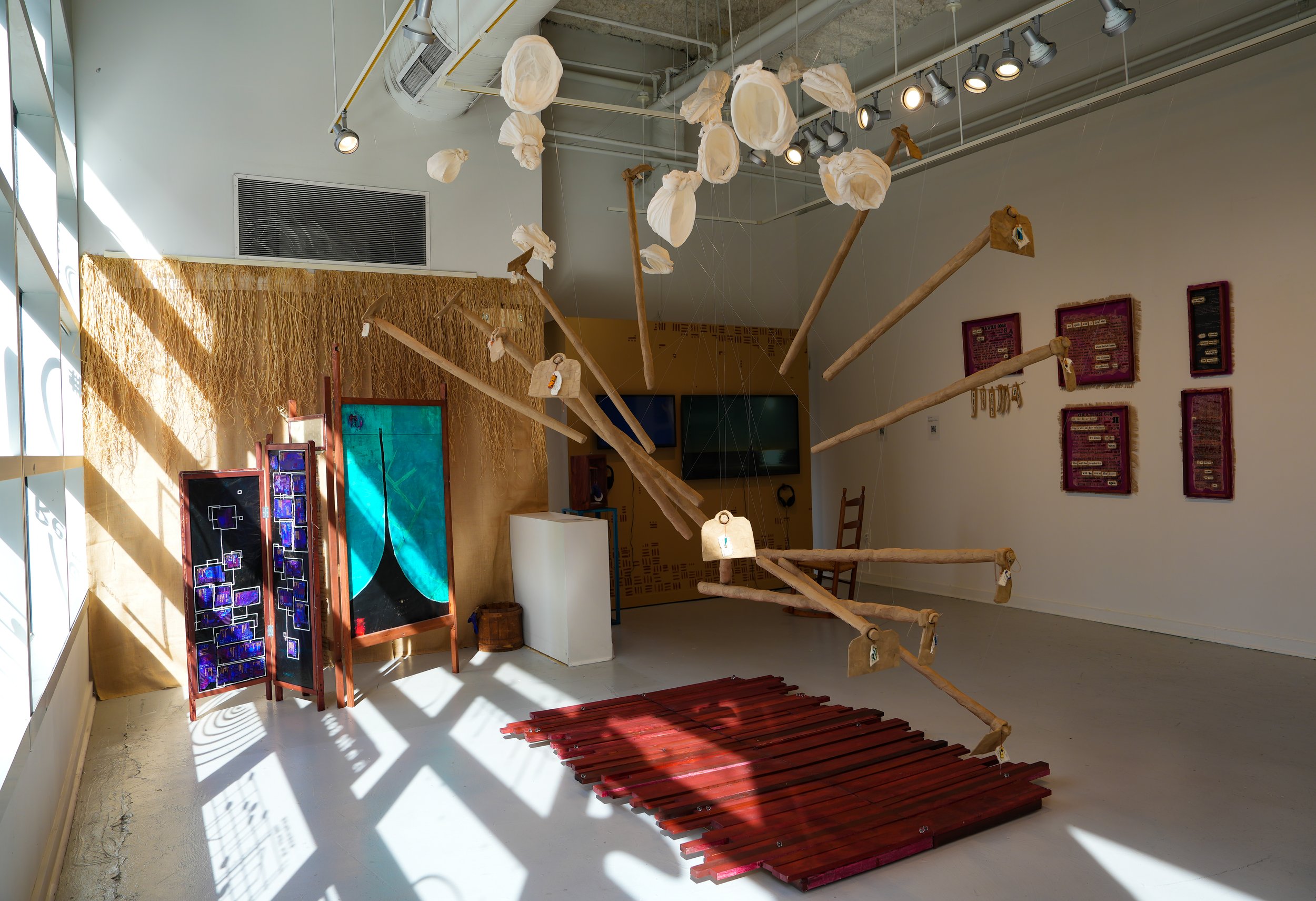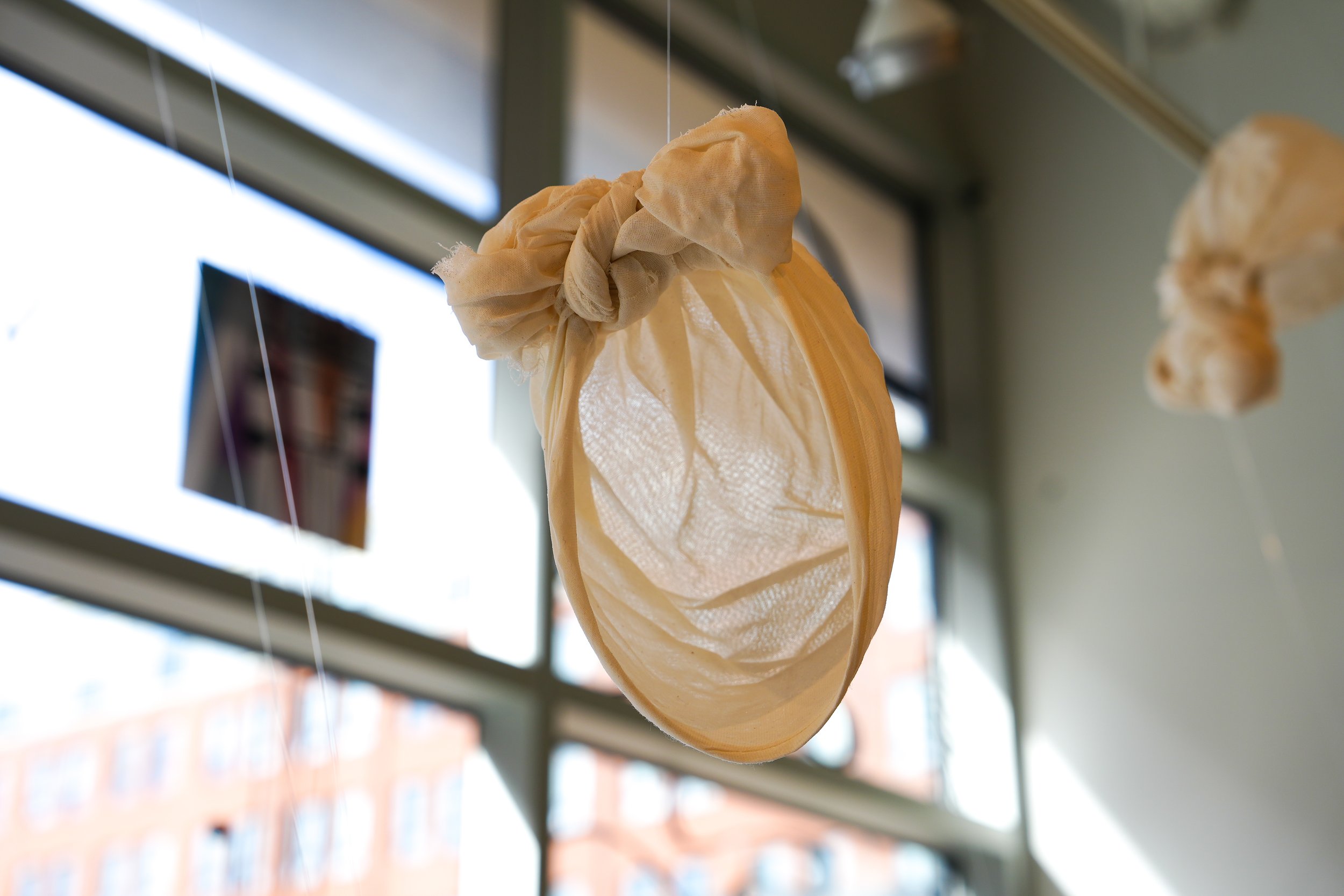It’s about flight, 2023
mixed media sculpture, 5x7x9ft
craft paper, glue, cheesecloth, copper wire, resin, wood, calico, embroidery thread



















Photographs by Jordana Rubenstein-Edberg
This sculpture is dedicated to the memory of 14 enslaved people, who escaped from Poolesville, MD in 1831.
Escape was sometimes referred to as "slave flight". In the published story, The People Could Fly by Virginia Hamilton, a root doctor sings a special song to enslaved people working the fields. The song reminds them of their powers, and they fly away home. In other versions of the story, it is noted that when Black people took to the skies, their hoes were left still working the ground.
Enslaved people used the hoe to work the fields, and also to tend to their own gardens, called a "truck patch". In the Chesapeake Region, enslaved people often cultivated their truckpatch by moonlight, and supplemented the little food they were allotted by gardening, foraging, and fishing.
The dancefloor at the base of the sculpture is inspired by the ways that secret dance gatherings were a space of refuge, refusal and revival. At the risk of severe punishment Black communities coordinated secret dance parties in the woods, and used dance as a way of reclaiming their bodies, time, movement, and personal agency.